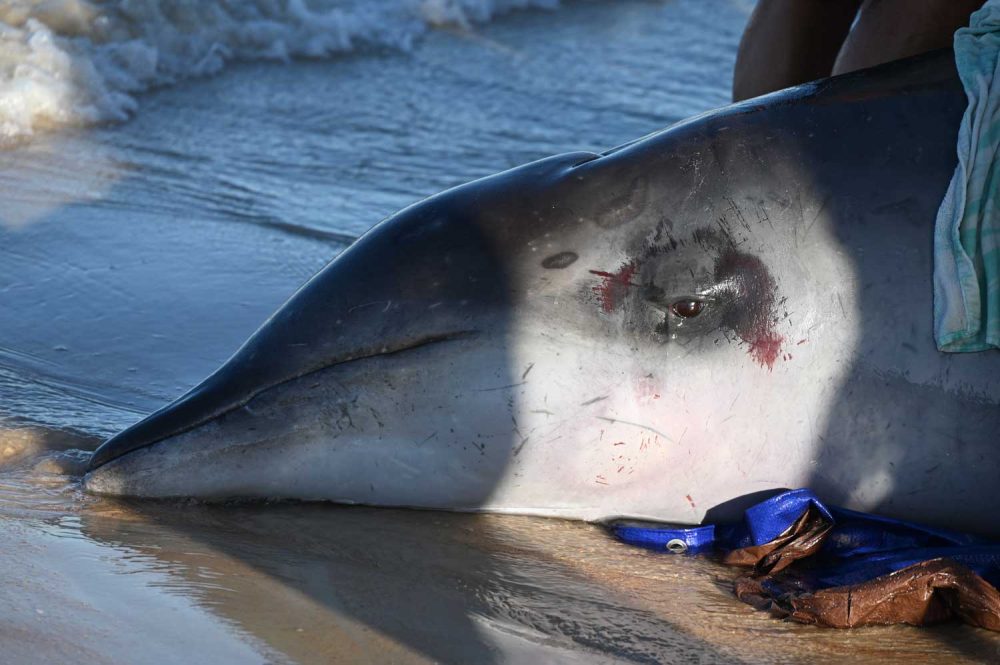
For the second time in only 10 weeks, a rarely seen whale beached on Flagler County’s sands and was put down hours later before it was to be removed from the surf and transported by truck to Orlando’s SeaWorld for a necropsy.
The 15-foot beaked whale, a reclusive species that dives deep and far offshore, was alive when it beached around 2:30 p.m.–when it was first reported to Flagler County’s 911 center–and was still alive near sundown, awaiting the arrival of a veterinarian. Striations on its body suggested it was not a young animal, as one of the Hubbs SeaWorld volunteers there said.
The tide was rising and a team of volunteers and workers with Hubbs Seaworld (an organization that partners with SeaWorld) kept it watered with bucket after bucket, some of them handed over by a little girl using her own play bucket to help. The team prevented the animal from washing back out to sea.
The SeaWorld veterinarian was arriving at the scene in early evening to euthanize the animal. Hubbs had its own truck and ice ready to transport it back to SeaWorld, where Hubbs would perform the necropsy.
“We see them maybe once every couple of years,” Wendy Noke Durden, a research scientist with Hubbs SeaWorld said at the scene, during a brief break from tending to the whale, “because they’re deep-diving animals that live far, far offshore.”
Only last January 11, further north near Hammock Dunes Club, a killer whale that a necropsy later determined had been sick, beached and died. At that point it was only the second time in 11 years that a whale had beached on Flagler sands, and the first time that a killer whale had beached anywhere in the Southeast. (See: “In ‘Extremely Rare’ Event, Killer Whale Beaches and Dies in Surf Near Hammock Dunes Club.”)
Whales have been stranding in seemingly high numbers in recent years, with 16 humpback whales stranding up and down the East Coast this winter, according to the Marine Mammal Commission. But the commission disputes the “unusual” characterization.
Officials have battled some misinformation about the strandings, noting that strandings are not unique. “In fact, ten or more humpback whales have stranded each year” since 2016, the commission says, “with a high of 34 in 2017.” Ship strikes have been linked to 40 percent of the deaths. (See: “No Evidence Links Wind Turbines to Whale Deaths, But Ship Strikes May.”)
“It doesn’t look young especially. Doesn’t look super old. But we don’t see those very often,”
Why not return the animal to the sea? “If animal strands on the beach,” Agatha Fabry, with Hubbs SeaWorld, said, “it’s very, very rare that there is an exception–the exception will be like a mass stranding, where there may have been a mistake, or maybe one was sick and all stranded with it–but when there is a solo animal, something is wrong. So, injured, some sick. So probably when we’re going to do a necropsy, we’re going to find something inside.”
Durden could not determine just yet whether the animal was male or female or what the cause of her stranding could be, but had the same conclusions as Fabry: Given the circumstances and the specie, illness and injury would have brought it to shore.
“They’re typically in the process of stranding is why they come to shore. They don’t just make a wrong turn and end up on the beach,” Durden said. “It’s usually when they’re very sick and in the process of dying, unfortunately, for this species. There are some species that mass strand where there’s animals that are healthy in the group. But a single stranding of a beached whale that lives in far, deep offshore waters, it’s usually because they’re very sick and likely in the process of dying. She’s stranded multiple times this morning. So she hit the beach, swam off, hit the beach, trying to swim out, and not strong enough to do it.”
Kevin Swiger and his wife–residents of Plantation Bay who were on the beach–spotted the whale. “It was being washed up on the shore about 100 yards up” from where Swiger stood in early evening, and where the whale was at that point. “It was struggling but unfortunately it was so worn out that the tidal waves were just washing over and rolling it over and over again.”
Durden very tentatively estimated the animal’s weight at 3,000 pounds. It is a mesoplodon–a toothed whale–but she could not yet determine if it were a Gervais’ or a True’s beaked whale.
Either members of the beaked whale family are little known, according to the National Oceanic and Atmospheric Administration (NOAA). There is insufficient data on either to know their population status, according to NOAA.
The stranding today drew far fewer people to the sands, possibly because authorities kept a low profile, refraining from posting about it on social media (as had been the case in January), though even after news outlets reported on the stranding, the crowd remained modest–a few dozen people at most. Roger’s Towing of Bunnell was expected to tow the animal off the beach.
![]()

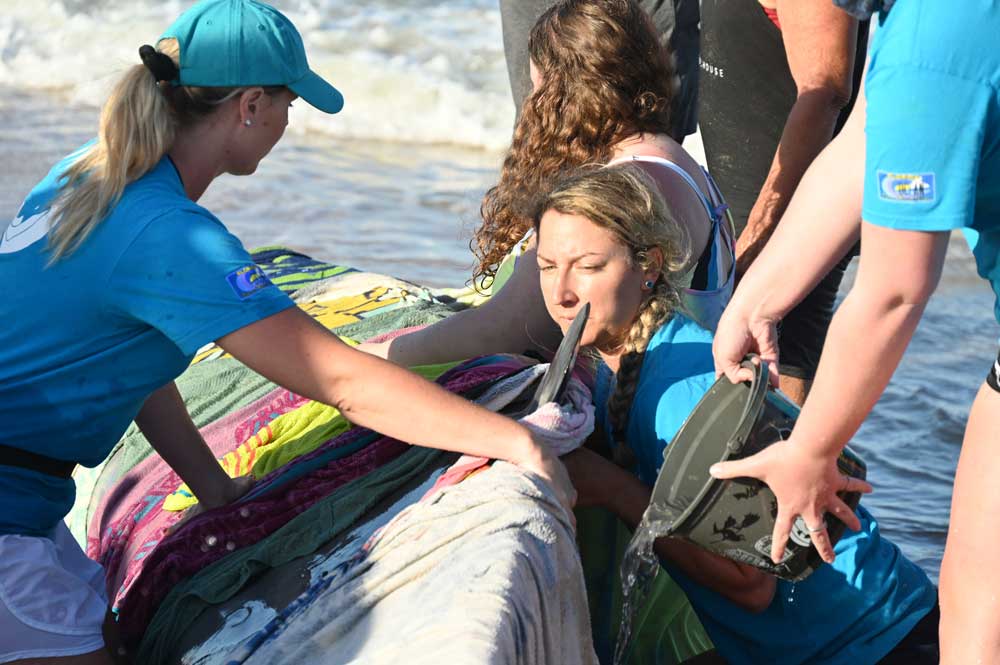
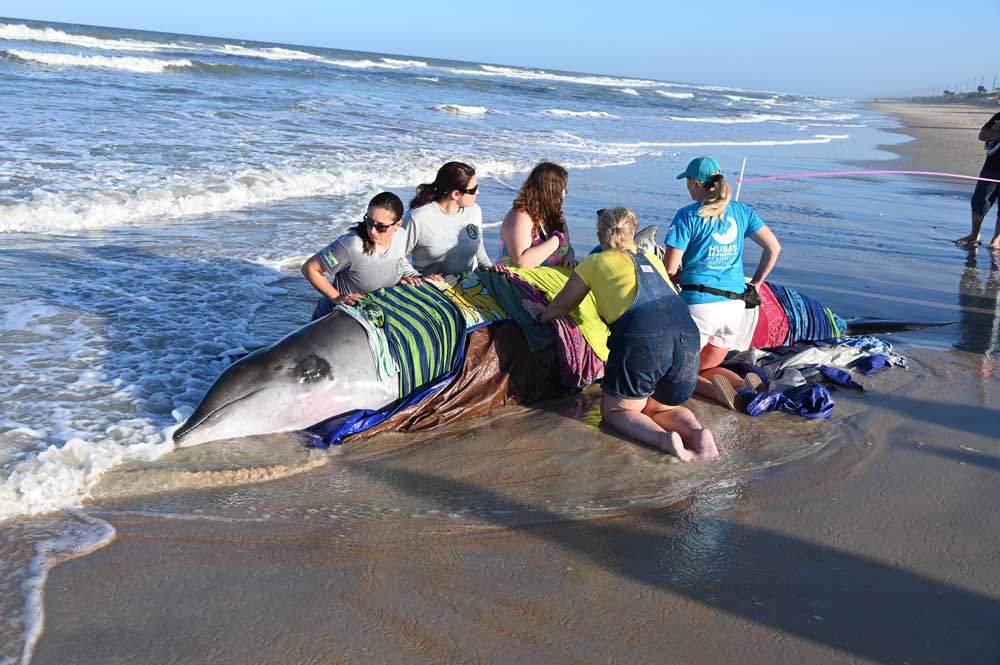
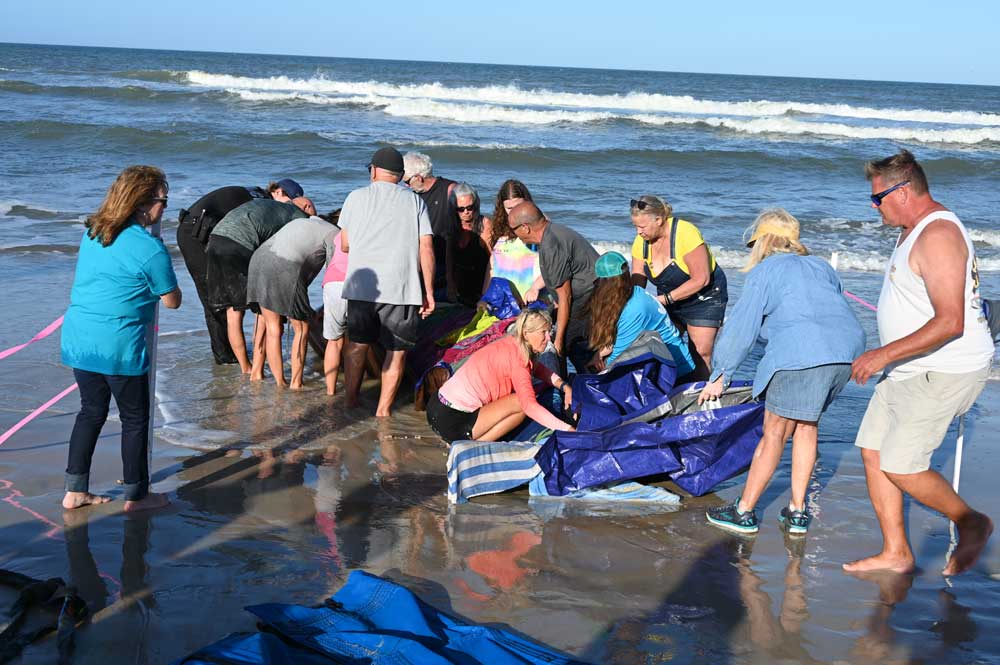
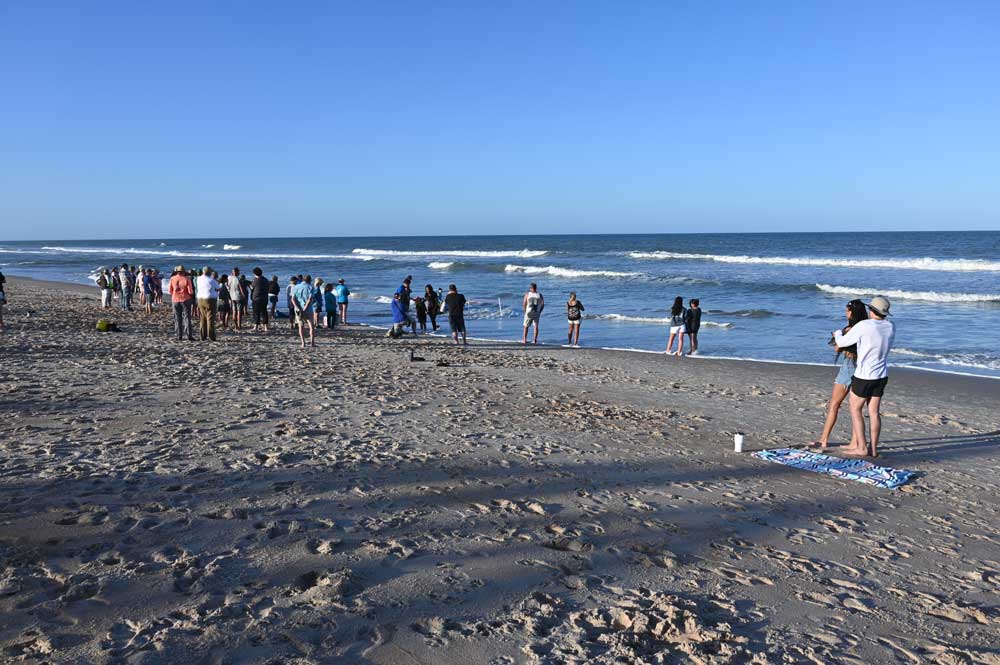





























Flagler Citizen says
Any chance its related to the massive sargassum weed flotilla heading toward the east coast and Caribbean?
Willy Boy says
Sonar casualty?
Concerned Citizen says
We waste all this money on space exploration.
Yet we understand so little of the ocean and the eco systems that help support our planet. The ocean is vast and still has a lot to offer for scientific research. Why not refocus some of that research so we can better understand how our own planet works?
Joe Chiponis says
How can the article state so surely, that it has nothing to do with Wind turbines? How can they rule that out?
YankeeExPat says
Because there are no ” Wind Turbines ” on Florida’s coast ……unless you are a FOX /Tucker Carlson /Mark Levin viewer and have been enveloped in their horseshit monologues.
C’mon man says
I enjoy watching Tucker Carlson myself.
Willy Boy says
Closest wind turbines 26 naut. miles east of Cape Henry, VA. As the crow flies (or whale swims) about 700 miles. Cuvier’s beaked whale was recorded diving over 9,000 ft. and holding it’s breathe for over 3 hrs. 42 min., so they’ve likely got purty good range.